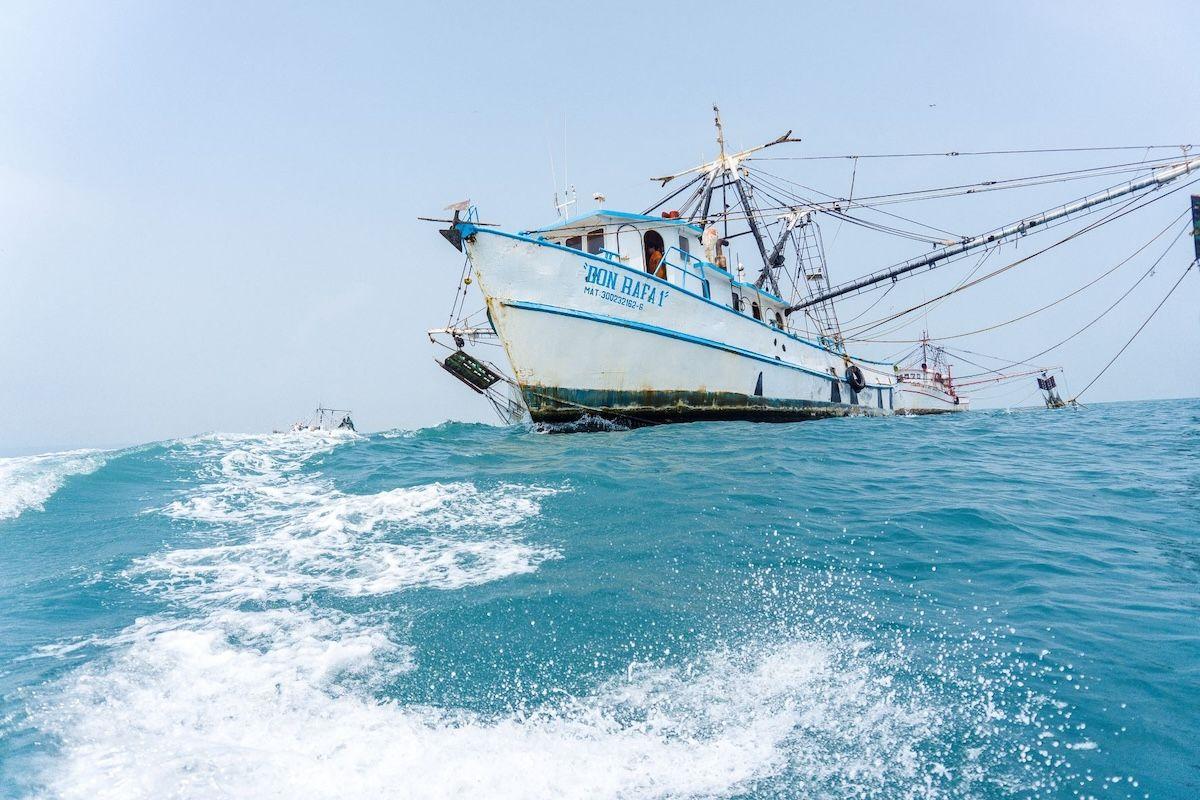Fisheries face challenges to ensure the sustainability of the oceans. The Greenpeace organization has dedicated itself to carrying out studies in the United States on the commitments of supermarkets in that country to meet this goal.
In February of last year, they published the second edition of the report “The High Cost of Cheap Tuna”, which surveyed 16 supermarkets regarding sustainability and labor rights. Five years ago, in 2018, the organization published the report “Carting Away the Oceans 10”, where it evaluated and ranked the largest retailers in the United States according to their commitment to sustainable seafood.
The importance of this monitoring is no less important. In 2021, the U.S. fishing industry generated an economic impact of 193 billion dollars in sales, according to official data from the neighboring country.
In an interview written to delve into the challenges faced by the retail sector in the United States, Causa Natura Media interviewed Charli Fritzner, manager of the Beyond Seafood project at Greenpeace USA, who gave his opinion on the challenges in the fishing sector in that country and the globe.
— What impact does the current supply of fish have on the oceans?
While consumption of tuna and other seafood has increased over the past decade, the problem of overfishing isn't just about meeting customer demand. Often more fish is caught than can be sold.
Bycatch and ghost gear, resulting from destructive and negligent fishing practices, further contribute to the problem. They harm not only fish but also other species of marine life such as turtles, sharks, rays, dolphins, humpback whales, seabirds and other key species crucial to a healthy ocean ecosystem.
Illegal, unregulated and unreported (IUU) fishing and harmful environmental practices share a strong connection with forced labor. These practices reinforce each other and keep prices low while maintaining high profit margins for suppliers and retailers in the seafood supply chain.
— To what extent do you consider retailers to be a decisive factor for ocean sustainability?
Retailers play an important role in the seafood supply chain. They have the power to decide which suppliers to supply on their shelves and can set standards that impact the supply chain to processing plants and ships. As they benefit from these goods, they have a duty to act responsibly and ensure that the products they offer to consumers are free from environmental harm and from modern slavery/forced labor.
— In the report “The High Cost of Cheap Tuna, Second Edition” several retailer scorecards highlight that some did not complete the Greenpeace survey. How accessible have they been when asked questions about this and other reports related to their role in ocean sustainability?
Some retailers are more transparent than others with Greenpeace regarding their policies, practices and debates. Hy-Vee, for example, worked in partnership with Fishwise to reveal its list of vessels after consulting with Greenpeace.
It remains the only company that has made this commitment, even as the retailer ranking report highlights the immediate need for improvement and transparency in global tuna supply chains. More retailers need to follow Hy-Vee's example.
— From the customer's point of view, would you say that the more transparency, the more sustainable fish products there will be in supermarkets?
Transparency and traceability are critical to ensuring that all parties involved in the seafood supply chain are held to account. Clear labeling is also essential, allowing customers to understand the origin of their seafood products, how they were obtained and the methods used to capture them. This knowledge enables customers to make better-informed decisions.
However, the burden of investigating the complicated seafood supply chain to verify that products are free of forced labor and environmental harm should not fall on customers. Retailers and governments have a responsibility to protect customers from contaminated products and must do more to meet that duty.
— In the report Carting Away The Oceans, Greenpeace warned about the traceability programs that retailers adhere to. What factors must be included for traceability to be truly reliable?
Retailers must ensure that their supply chains have full traceability and as much transparency as possible. We recognize that there are obstacles and challenges to traceability that are difficult to address without government regulation. For now, retailers have to decide if they are comfortable with that level of uncertainty and risk, or if they prefer suppliers who can provide it.
— Greenpeace USA does a great job measuring supermarkets and their environmental and human rights concerns, but what institution in the United States is responsible for doing this and how do you rate the performance of officials in this matter?
The National Oceanic and Atmospheric Administration (NOAA), in particular the NOAA Fisheries Office, is “responsible for safeguarding the nation's ocean resources and its habitats.” One of its programs, the Seafood Import Monitoring Program (SIMP), monitors and audits the importation of specific seafood species (including tuna) into the United States. NOAA Fisheries' decision in November to withdraw a proposal to expand the SIMP to cover more species than the current 13 it covers was disappointing. Senator Jeff Merkley and his colleagues, more than 100 chefs from across the United States and several NGOs criticized the decision.
Although fishing boats operate far from American shores, ensuring that American consumers are not unwittingly complicit in labor rights abuses when buying food is a national concern. The depletion of species such as tuna in our oceans is not only a tragedy, but it also has a chilling ripple effect on global ocean food chains.
Recently, Representative Jared Huffman and 21 congressional colleagues also urged President Biden to take decisive action against illegal fishing and human rights violations at sea in the extensive seafood supply chain.



Comentarios (0)